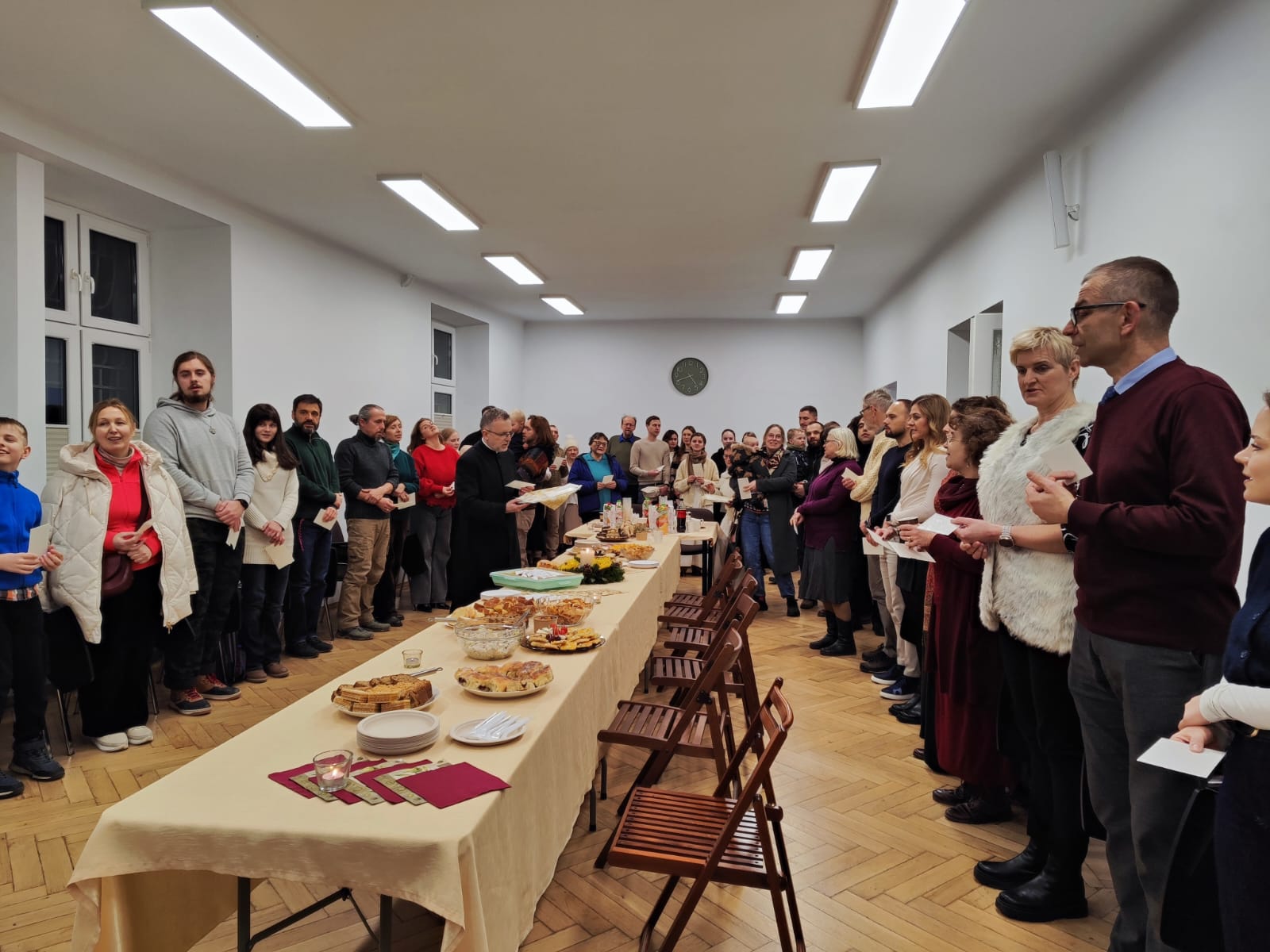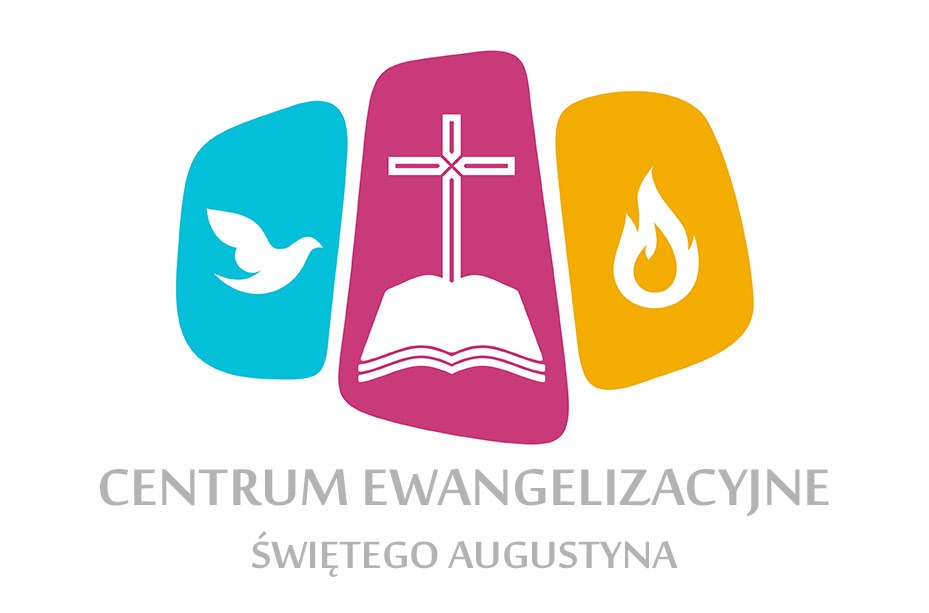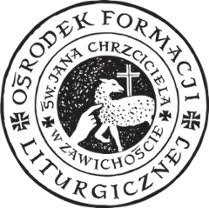THE RITE OF ACCEPTANCE INTO THE ORDER OF CATECHUMENS AND
INSTRUCTION FOR CELEBRATING THE RITES
INTRODUCTION
The Rite of Acceptance into the Order of Catechumens (Rite of Acceptance) is the first of the “threshold rites” of the Rite of Christian Initiation of Adults (RCIA), and the first public ritual. In the Rite of Acceptance, a change of identity takes place: those previously known as inquirers become catechumens. They are officially welcomed by the Church as disciples, members (albeit not yet full members) of the household of faith. The text calls this rite “the first consecration by the Church”1 of those seeking Christian initiation. They are literally marked with the cross of Christ as God’s own.
Consequently, the gathered community and its welcome, as well as the inquirers and their promise of discipleship, are essential to this rite. Except in extraordinary circumstances, it is celebrated during Mass, so that “the entire Christian community…take an active part in the celebration.”2
The Rite of Acceptance could be celebrated several times in the course of the year. When planning their annual calendar, each parish should fix at least two, and often three, times for celebrating this rite,3 so that as inquirers are deemed ready, they may be welcomed in a timely manner.4
Before the Rite of Acceptance, it is crucial that there has been a sufficient precatechumenate period for each inquirer, and that discernment has taken place that they are ready for this step.5 The criteria for their readiness may be found in RCIA 42:6
4 Note here that, in addition to unbaptized inquirers, you will probably have candidates, already baptized in another denomination or even as a Catholic, who come to us with varying degrees of catechesis. As you approach these pre-set dates, part of the decision-making process will not only be the readiness of the inquirers and/or candidates, but also which of the rites will be celebrated, and at which Masses. For an in- depth exploration of which rites to celebrate, visit AOB Worship RCIA then “Sorting it All Out.” The Office of Worship would also gladly offer advice on appropriate dates for scheduling these rites.
6 Discernment of an inquirer’s readiness is a crucial skill for an RCIA team. For a helpful discussion of the role of discernment, see the Foundations in Faith series, Precatechumenate Manual (Resources for
- Evidence of first faith
- Intention to change their lives and enter into a relationship with Christ
- Evidence of the first stirrings of repentance
- A Start to the practice of calling upon God in prayer
- A sense of Church
- Some experience of the company and spirit of Christians (through contact with a priest or other members of the community).
As with the other rites, in the celebration of the Rite of Acceptance, every effort should be made to make a clear distinction between catechumens (unbaptized persons who are seeking full Christian initiation, usually at the Easter Vigil) and candidates (persons already baptized – usually in another Christian denomination – who are uncatechized and seeking reception into the full communion of the Catholic Church7, as well as uncatechized Catholics seeking to complete their Christian initiation, through the sacraments of Confirmation and Eucharist).
It is recommended — as a way to make a clear distinction — that parishes which celebrate multiple Masses on Sunday celebrate the Rite of Acceptance at one Mass, and the Rite of Welcoming the Candidates (for baptized but uncatechized adults) at another Mass or Masses. Even in parishes with only one Sunday Mass, these rites could be celebrated on separate weekends. For extraordinary cases (such as for a family with both baptized and unbaptized persons), a Combined Rite is provided, but in this rite every attempt should be made to make clear distinctions (such as separate placement of catechumens and candidates).
THREE OPTIONS
Keeping in mind these considerations, the templates provided here offer three options for the Rite of Acceptance and Welcome:
Christian Living, 1988), in particular pages 8 and 9. The Celebrating the Rites manual of the same series also provides an excellent summary of considerations on pages 18-19.
For a more in-depth discussion of the role of discernment in the RCIA, see Discerning Disciples by Donna Steffen (Paulist Press, 1997).
7 We should make note that we also have baptized, catechized persons from other denominations, seeking full communion with the Catholic Church. Such persons will need a process of formation, but the duration depends upon the extent to which those persons have lived the Christian life. The National Statutes for the Catechumenate (NS) state that “those baptized persons who have lived as Christians and need only instruction in the Catholic tradition and a degree of probation within the Catholic community should not be asked to undergo a full program parallel to the catechumenate” (NS, 31, emphasis added).
It is no accident that the RCIA does not specifically provide formation for baptized, catechized persons. The bias of the rite is that the baptized, catechized person needs a different type of formation altogether. The National Statutes address this when they insist that those baptized in another Christian denomination should not be treated as catechumens: “Their doctrinal and spiritual preparation for reception into full Catholic communion should be determined according to the individual case, that is, should depend on the extent to which the baptized person has led a Christian life within a community of faith and has been appropriately catechized to deepen his or her inner adherence to the Church” (NS, 30). With this is mind, it would seem that baptized, catechized persons would not be the subjects of either the Rite of Acceptance or the Rite of Welcome. Again, see footnote # 4 for resources which will help you make these decisions.
A: Parish Rite of Acceptance into the Order of Catechumens B: Parish Rite of Welcoming the Candidates
C: Parish (Combined) Rite of Acceptance into the Order of Catechumens and of the Rite of Welcoming Baptized but Previously Uncatechized Persons
These templates are presented here only as a model of how individual parishes might celebrate these rites. Celebrations will be different from parish to parish, if for no other reason than physical space is a crucial factor in designing any ritual. Other important factors are the number of inquirers and the size of the assembly.
To celebrate these rites effectively, it is recommended that that the pastor, those responsible for liturgical preparation and the RCIA Coordinator form a rite planning team who will design the rite carefully, and produce your own leader’s guide (script) similar to these templates. Working directly from the ritual book, with its multiple options and rubrics, is challenging in the best of circumstances.
If you have a history of celebrating these rites in your parish, you are already on the way to establishing the relationship the rite calls for between the local parish and catechumens. To nurture this relationship continually, engage in a regular evaluation of your ritual practices by comparing your leader’s guide to the actual ritual RCIA text and to these templates, and look for how well your ritual language is reflecting the intent of the original document. As your community’s understanding of Christian initiation deepens, your liturgical practices can and should reflect that growth.
In all regards, these rites and policies apply to the Christian initiation of adults, as well as to the Christian initiation of children of catechetical age. 8
Each parish is required to maintain a Register of Catechumens (note that this is not the Book of the Elect which is signed later).9 “After the celebration of the Rite of Acceptance, the names of the catechumens are to be duly inscribed in the register of catechumens, along with the names of the sponsors and the minister and the date and place of celebration.”10 This record-keeping should be part of the duties of the person who enters all other sacramental records.
8 The RCIA is also required for any children of catechetical age, with only minor adaptations. In the Rite of Acceptance, for example, it is usually the parents who present the children to the assembly, and the parents give their consent to the child’s request for baptism. Children are also omitted from the First Acceptance of the Gospel, although the presider may ask the children, as a sign of their assent, to repeat Christ’s words at the end of the opening dialogue (RCIA, 264).
9 One Source for a bound Register of Catechumens, as well as a Register for Reception Into Full Communion, is D.P. Murphy Co., Inc., 945 Grand Boulevard, Deer park, NY 11729 (www.dpmurphy.com; 1800 424-8724).
10 RCIA, 46. Note that only catechumens are entered, not candidates. See previous footnote for a source for a Registry for Reception Into Full Communion.
This rite is celebrated only with inquirers (those who have not been baptized). The Rite of Welcoming of the Candidates (see option B) is celebrated at another Mass, to maintain a clear distinction between Catechumens and (already baptized) Candidates.
THE STRUCTURE OF THE RITE
The structure of the Rite of Acceptance is:
- RECEIVING THE INQUIRERS (at the Threshold of the Church)
The inquirers, their sponsors “and a group of the faithful” gather outside the church. The priest goes to meet them, as the assembly sings a song.
Greeting
The priest greets the inquirers, expressing the joy of the Church. There is room here for him to tell what brought these inquirers to this point.
Opening Dialogue
The inquirers are introduced to the assembly
Inquirers’ First Acceptance of the Gospel
Note that this is not the passing on of a book, but the embrace of a way of life patterned on the Good News. This is the principal expression by the inquirer that she or he does indeed wish to embrace a life of discipleship.
Affirmation by the Sponsors and the Assembly
The sponsors and the assembly affirm that they are ready to help the inquirers find and follow Christ. The priest concludes with a prayer.
Signing of the Inquirers with the Cross
As a sign of their new way of life, the inquirers are signed with the cross on the forehead, as well as all the senses, and their hands and feet. From this point forward, they are called “catechumens.”
The priest concludes with a prayer.
Invitation to the Celebration of the Word of God
All enter the church for the Liturgy of the Word.
- THE LITURGY OF THE WORD Instruction
The priest gives a brief instruction on the dignity of God’s Word.
Readings and Homily
The Liturgy of the Word proceeds as usual.
The scriptures proclaimed and preached are those of the day.11
Presentation of a Bible (or Book of the Gospels)
A book containing the gospels is presented to the catechumens.
Intercessions for the Catechumens
A litany of prayer is prayed for the catechumens.
Prayer Over the Catechumens Dismissal of the Catechumens
The catechumens are dismissed from the assembly with a catechist, signifying that their formation in the Word has begun.
- THE LITURGY OF THE EUCHARIST
The Liturgy of the Eucharist proceeds as usual.
11 This is assuming that this celebration is at a Sunday Mass, which is normative in the Diocese of Richmond. As suggested earlier, when choosing the date for the celebration of the rite, one of the considerations needs to be that the scriptural texts for that day are suited to the rite. The Office of Worship provides a list of suggested dates.
- RECEIVING THE INQUIRERS12
The inquirers and their sponsors, gather “outside the church.”13
Instead of the customary procession of ministers to the front during the gathering song, consider having the priest and other ministers gather with the assembly and simply take their places before it is time to begin.
Leave the main doors to the church open. Be sure a microphone (preferably cordless) is available, so that the responses of the inquirers can be heard clearly.
When it is time to begin, an appropriate gathering song begins. All stand, and the priest, along with the deacon or lector carrying the book of the gospels, a minister carrying the processional cross, process to the entrance. If the church is constructed so that there is a good degree of visibility from the body of the church to outside (e.g., if there is a glass wall), they may even go outside to where the inquirers are gathered.
As the song ends, the priest faces and greets the assembly:
P: In the name of the Father, and of the Son, and of the Holy Spirit.
A: Amen.
P: The Lord be with you.
A: And with your spirit.
P: My brothers and sisters, this truly a day of joy! As we do each Sunday,
today we gather in the presence of the Holy Spirit, as we give thanks and
praise to God for the gift of Jesus Christ, the anointed one, to whom we offer
our love, our honor, our thanks, our entire lives.
12 Once again, please remember that the technical term “Inquirer” is to be used only for unbaptized persons. 13 The rite gives a great deal of leeway, continuing “(or inside at the entrance or elsewhere) or at some other site suitable.” (RCIA, 48). The intent of the rite, however, is one of the assembly going out to greet these newcomers. This will need to be adapted in each parish, as some more contemporary churches have commons or plazas ideally suited to the rite; others are limited to a crowded vestibule. In smaller assemblies, it may be quite possible to lead the entire assembly to the commons, the plaza, or a parish hall.
Use as your inspiration here the solemn procession on Passion Sunday. If it is impractical for the assembly to process out, is there a way to gather at least a representative part of your assembly outside the church for this rite, and then lead them into the Church with the catechumens at the appropriate time?
An unfortunate adaptation of this rite has been having the inquirers knock on the door. Although dramatic, it reduces the gesture of the Church going out to escort the inquirers in to one of simply answering the door. Consider taking the effort to make this rite a true procession of the Church.
Today, we will welcome new inquirers into the catechumenate. Over the
coming year, they will prepare for their initiation into the Christian faith by
baptism, confirmation, and Eucharist. You are very important in this rite,
for it is the entire Church – those in this community as well as the entire
Body of Christ that is beyond the walls of this place – that accepts these
inquirers as persons who intend to become members.
He turns to the inquirers.
Greeting
P: Who seeks entrance into this faith community?
A member of the RCIA team answers:
T: There are inquirers here, who during the past months have heard the living God proclaimed, and they have encountered Jesus Christ, sent for the salvation of all. As a result of this initial conversion, they have begun to change their lives, and be transformed in the life of Christ. Today they come seeking entrance into this faith community, where they wish to continue to grow as disciple of the Lord. We give thanks to God for them, as they seek begin the Catechumenate period of their faith journey. They are:
OPENING DIALOGUE
The inquirers are named.
As each is named, he or she steps forward. Then, their sponsor comes forward from the group of faithful gathered at the entrance, and joins her or him. The sponsor brings the inquirer to the priest, who asks the inquirer:
P: N., What do you ask of God’s Church?
I: Faith.14
P: What does faith offer you?
I: Eternal life.
The priest greets the inquirer(usually with an embrace) as the assembly sings: A: We stand with you, we pray for you, O holy child of God!15
14 The rite clearly allows inquirers to answer in their own words. Especially if there are only a few inquirers, a heartfelt, well-thought out one or two sentences would have a stronger impact.
15 Although not called for in the rite, a sung welcome by the assembly certainly creates a sense of welcome. This sung response may be found in David Haas’ Who Calls You by Name: Music for Christian Initiation (GIA, 1988).
That inquirer steps aside, and the next inquirer is named and brought forward. This process is repeated for each inquirer.16
INQUIRERS’ FIRST ACCEPTANCE OF THE GOSPEL
When all have been named and questioned, the priest continues:
P: N. and N., God gives light to everyone who comes into this world; though unseen, he reveals himself through the works of his hand, so that all people may learn to give thanks to their Creator.
You have followed God’s light, and the way of the Gospel now lies open before you. Set your feet firmly on the path, and acknowledge the living God, who truly speaks to everyone. Walk in the light of Christ, and learn to trust in his wisdom. Commit your lives daily to his care, so that you may come to believe in him with all your heart.
This is the way of faith along which Christ will lead you in love toward eternal life. Are you prepared to begin this journey today, under the guidance of Christ?17
I: I am.
AFFIRMATION BY THE SPONSORS AND THE ASSEMBLY
P: Sponsors, you present these inquirers to us; Are you ready to help these inquirers by being witnesses to the living Christ, and accompanying them on the journey of discipleship?
S: We are.
P: Members of this assembly, these sponsors have spoken in your name, but I ask you as well, for it is your responsibility to journey with them. Are you ready to journey with these inquirers, helping them to know and follow Christ?
S: We are.
With hands joined, the priest prays/sings18:
16 The rite does allow, if there is a large number of inquirers, that the questions may be asked only once of all the inquirers.
17 Other options for the acceptance of the Gospel may be found in RCIA, 52.
18 This affirmation of the assembly and the following signing of the senses is the central element of this rite. Consider singing it. A good setting of the entire text can be found in Who Calls You by Name: Music for Christian Initiation.
P: God of mercy,
we thank you for these your servants.
You have sought and summoned them in many ways,
and they have turned to seek you.
You have called them today, and they have answered in our presence: we praise you, Lord, and we bless you.
A: We praise you, Lord, and we bless you.
If the arrangement is such that visibility is poor, consider reprising the gathering song at this point, and leading the inquirers into the midst of the assembly.19 When they are in the church, the priest continues:
SIGNING OF THE INQUIRERS WITH THE CROSS
P: Dear inquirers, your answers mean that you wish to share our life and hope in Christ. To admit you as catechumens, we now mark you with the sign of Christ’s cross. The whole community welcomes you with love, and stands ready to help you.
The sponsors stand in front of the inquirers. As the priest says each prayer, the sponsor traces the cross over the candidate as indicated.20
P: Receive the sign of the cross on your forehead. It is Christ himself who now strengthens you with this sign of his love. Learn to know and follow him.
A: Christ will be your strength! Learn to know and follow him!21
P: Receive the sign of the cross on your ears, that you may hear the voice of the Lord.
A: Christ will be your …
P: Receive the sign of the cross on your eyes, that you may see the glory of God.
A: Christ will be your…
P: Receive the sign of the cross on your lips, that you may respond to the word of God.
A: Christ will be your…
19 Instead of bringing them up to the sanctuary, perhaps you could position them in the center aisle, with the assembly facing toward them. You will get a much stronger sense of the Church gathering around the inquirers this way.
20 If there are only a few inquirers, the priest may mark each candidate himself as he sings the prayer, but then the sponsor follows with the same.
21 Various sung settings will have different responses for the assembly. Even if the prayer is spoken, the rite prefers that the assembly’s response is sung.
P: Receive the sign of the cross over your heart, that Christ may dwell there by faith.
A: Christ will be your…
P: Receive the sign of the cross on your shoulders, that you may bear the gentle yoke of Christ.
A: Christ will be your…
P: Receive the sign of the cross on your hands,
that Christ may be known in the work which you do.
A: Christ will be your…
P: Receive the sign of the cross on your feet, that you may walk in the way of Christ.
A: Christ will be your…
Without touching them, the priest makes the sign of the cross over all the candidates at once22, as he sings:
P: I sign you with the sign of eternal life, in the name of the Father, and of the Son, + and of the Holy Spirit.
A: Amen.
CONCLUDING PRAYER
P: Lord, by the cross and resurrection of your Son, you have given life to your people.
These catechumens have been signed with the sign of Christ’s cross: make them living proof of its saving power,
and help them to persevere in the footsteps of Christ.
We ask this through Christ our Lord.23
A: Amen.
INVITATION TO CELEBRATION OF THE WORD OF GOD
P: My dear catechumens, [come now with us into the Church, to] share with us now at the table of God’s word.24
22 If it is the custom in your parish to present your catechumens with a cross, it would be appropriate for the sponsor to do this as the priest sings this final blessing (RCIA, 59)
23 Another option for this prayer is found in RCIA, 57.
24 If you’ve already brought them into the Church, you might say, “join us now and…”
- THE LITURGY OF THE WORD
The gathering song may be repeated here, or another appropriate song sung, as the assembly leads the catechumens into the church for the liturgy of the word, led by the cross bearer. The deacon or lector, carrying the Book of the Gospels, followed by the priest, are the last in the procession. When the Book of the Gospels is placed on the altar, the song ends, and everyone is seated. Then the priest addresses the catechumens again in these or similar words25:
P: Catechumens, during the Period of the Catechumenate, you will gather each week with the Church, and share with us the Liturgy of the Word. Listen to these scriptures carefully, for when the scriptures are proclaimed in Church, it is Christ himself who speaks. St. Ambrose, bishop of Milan in the 4th century, encouraged us to “drink in” the scriptures we hear like a delicious beverage. He said,
“Drink deeply of both beverages, the first testament and the second, because in each of them you are drinking Christ.
Drink Christ because he is the vine.
Drink Christ because he is the rock that gushes forth water. Drink Christ because he is the fountain of life.
Drink Christ because he is the river, whose streams give joy to God’s city. Drink Christ because he is peace.
Drink Christ because from his belly rivers of living water will flow. Drink Christ so that you can drink the blood that redeemed you.
Drink Christ so you can drink in his words.
Let the luscious syrup of God’s word flood the veins of your mind, and take possession of your heart.”
After an appropriate period of silence, the Liturgy of the Word proceeds as usual, using the readings of the day.
First Reading Psalm Response Second Reading
Acclamation before the Gospel Gospel
25 What is provided here is an example of what might be said as an instruction to the catechumens, who are officially joining us at this point as “hearers of the word.” RCIA #61 simply says that the priest “speaks to them briefly, helping them to understand the dignity of God’s word, which is proclaimed and heard in the Church.”
Homily
Silent Reflection
PRESENTATION OF A BIBLE26
P: Would our Catechumens please come forward?
The catechumens come forward, accompanied by their sponsors, and face the assembly. Each sponsor carries a new Bible to present to the catechumen.
The priest joins the assembly, and addresses the catechumens.
As he says the first line, the sponsors present the Bible in a way that is clearly seen by the assembly.
P: Catechumens, receive the Gospel of Jesus Christ, the Son of God.
All stand as they respond in song:
A: All God’s children, all Christ’s people, all you saints, receive this word! Claim the gift, the faith, the promise, build the body of the Lord.27
INTERCESSIONS FOR THE CATECHUMENS28
The priest addresses the assembly:
P: These catechumens, who are our sisters and brothers, have already traveled a long road. We rejoice with them in the gentle guidance of God, who has brought them to this day. Let us pray that they may press onwards, until they come to share fully in our way of life.
M: That God our Father may reveal His Christ to them more and more with every passing day, let us pray to the Lord:
A: Lord, hear our prayer.
M: That they may undertake with generous hearts and souls whatever God may ask of them, let us pray to the Lord:
26 An alternative is for the Priest or catechist to place the Book of the Gospels in their hands, to be symbolically received, using words such as,”…, receive the Gospel of Jesus Christ, which you have just heard proclaimed.”
27 “Build the Body of the Lord” by Lori True (© 2007, GIA Publications). Of course this is just one of many appropriate sung responses.
28 Even if it is not your usual custom to sing intercessions, consider singing them for this rite.
A: Lord, hear our prayer.
M: That they may have our sincere and unfailing support every step of the way, let us pray to the Lord:
A: Lord, hear our prayer.
M: That they may find in our community compelling signs of unity and generous love, let us pray to the Lord:
A: Lord, hear our prayer.
M: That their hearts and ours may become more responsive to the needs of others, let us pray to the Lord:
A: Lord, hear our prayer.
M: That in due time, they may be found worthy to celebrate the baptism of new birth and renewal in the Holy Spirit, let us pray to the Lord:
A: Lord, hear our prayer.29
PRAYER OVER THE CATECHUMENS
P: Please join me in blessing our catechumens [by extending both your hands in prayer over them].
All extend their hands in prayer over the Catechumens.
P: Almighty God, source of all creation, you have made us in your image.
Welcome with love those who come before you today. They have listened with us to the word of Christ:
by its power refashion them,
so that in time they may assume the full likeness of Christ, who lives and reigns for ever and ever.30
DISMISSAL OF THE CATECHUMENS
A catechist takes the Lectionary, and joins the Catechumens. The priest addresses the Catechumens:
P: My dear catechumens, this community now sends you forth to reflect more deeply on the word of God which you have shared with us today. Be assured
29 Although RCIA 68 allows the general intercessions of the Mass to be inserted here, and even to omit the Creed after the catechumens are dismissed for “pastoral reasons,” consider keeping them separate. These are intercessory prayers for the catechumens. We will profess the Creed and pray the Prayers of the Faithful after they have left.
30 Another option for this prayer is found in RCIA, 66.
of our loving support and prayers for you. We look forward to the day when you will share fully in the Lord’s Table.
A: May the word of God strengthen you; may the word of God nourish you; may the word of God comfort you all your life.31
As the assembly repeats the sung refrain, the catechist, carrying the Lectionary, leads the catechumens out to lead them in an extended reflection on the word.32
Once the catechumens have left, the priest concludes the Liturgy of the Word with the
CREED AND PRAYER OF THE FAITHFUL
- THE LITURGY OF THE EUCHARIST
The Liturgy of the Eucharist proceeds as usual.
31 This response by Christopher Walker (Celtic Mass, OCP, 1996) is designed to be used for the weekly dismissal of Catechumens, so it’s natural to use it here. Of course other sung responses are available and appropriate.
32 Be sure catechists are well-trained and prepared to lead dismissal catechesis. An excellent resource for those leading dismissal catechesis is Foundations in Faith: Catechist Manual Catechumenate (1998, Resources for Christian Living), with a separate manual for each liturgical cycle.













